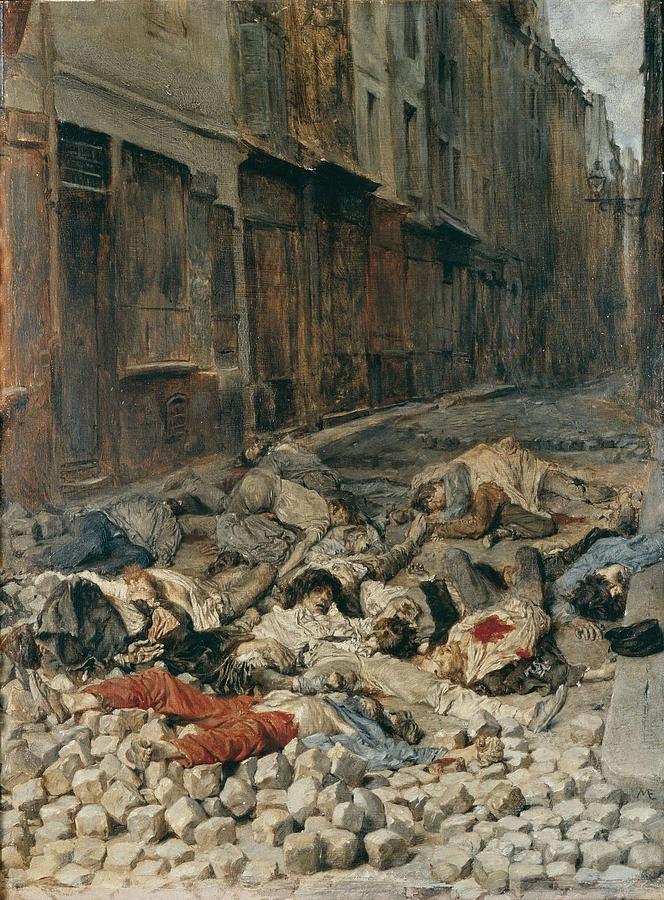A Massacre during June Days of 1848
Information from T.J. Clark, The Absolute Bourgeois: Artists and Politics in France, 1848-1851, p.27. (The wording is my own, D.P.)
Jean-Louis-Ernest Meissonier, the artist who produced the painting at right, was a captain in the National Guard in June 1848 and was present at the massacre he depicted in this painting. He later described the scene:
Meissonnier himself was a supporter of the conservative forces of order, and he presumably did this painting as a warning to future revolutionaries of the consequences of revolt. But the poorer population of the city remembered the kind of horror captured in this painting, not as sign of the folly of revolution, but rather as a reminder that the ruling classes in France were their enemies. This is the meaning to June 1848 that would reemerge in the Paris Commune of 1871. |
Jean-Louis-Ernest Meissonier, Memory of Civil War (Barricade on the Rue de la Mortellerie, June 1848) (1848) |
